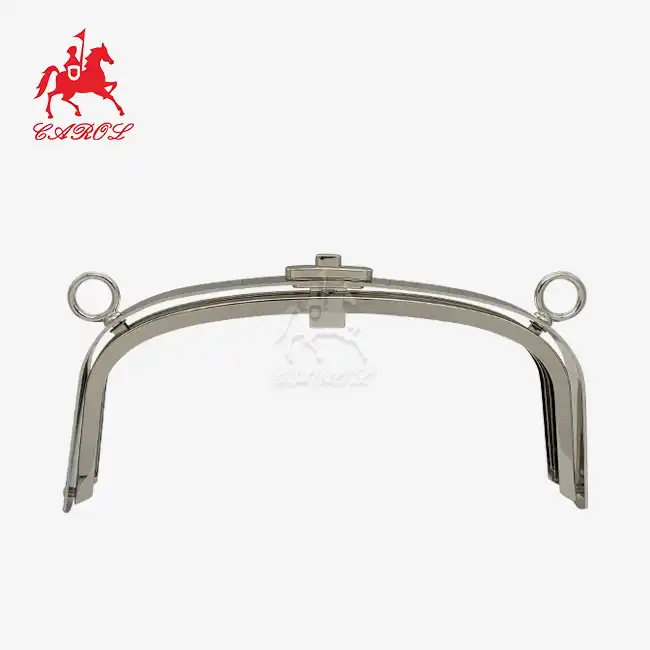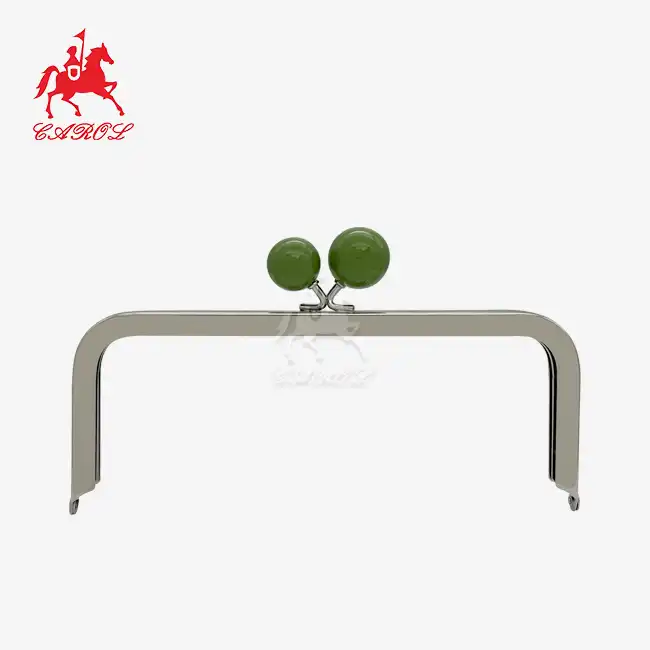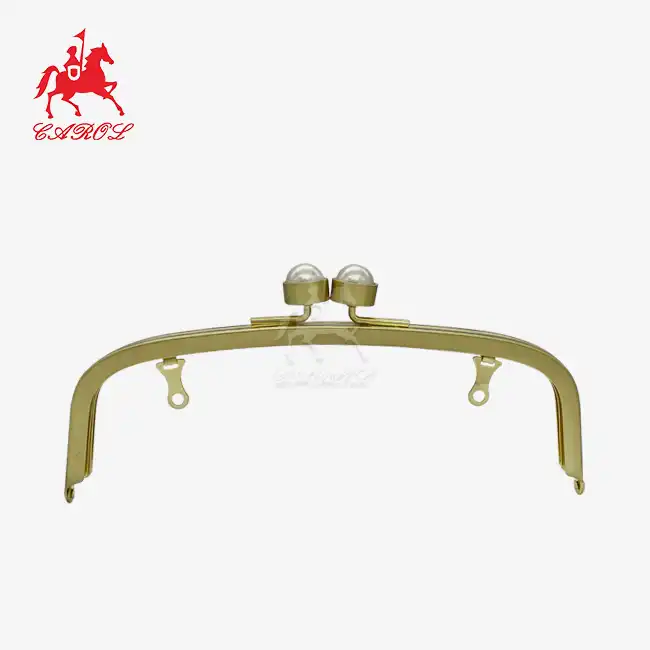Stainless Steel
Stainless steel emerges as the premium choice for dog buckle hardware due to its exceptional corrosion resistance and mechanical strength properties. This material contains chromium content typically ranging from 10.5% to 30%, which forms a protective oxide layer preventing rust formation even under challenging environmental conditions. Professional manufacturers favor stainless steel for high-end pet accessories where performance cannot be compromised.
The manufacturing process for stainless steel dog buckle hardware involves precise temperature control and specialized forming techniques. Grade 316 stainless steel, commonly specified for marine applications, provides superior resistance to chloride corrosion compared to standard 304 grades. These properties make stainless steel buckles particularly suitable for dogs frequently exposed to saltwater environments or humid climates where other materials might deteriorate rapidly.
Because of its high raw material price and processing requirements, stainless steel hardware is primarily limited by cost considerations compared to alternative materials. However, the extended service life and minimal maintenance requirements often justify the initial investment. Professional trainers and working dog handlers consistently choose stainless steel hardware for mission-critical applications where equipment failure poses serious risks.s.
Surface finishing options for stainless steel include brushed, polished, and passivated treatments that enhance both appearance and corrosion resistance. Lighter designs are nonetheless able to withstand loads adequately thanks to the material's inherent strength. According to third-party tests, premium stainless steel buckles can withstand thousands of engagements without bending or breaking. Because of this, they are great for harnesses and collars that get a lot of use.
Manufacturing tolerances achievable with stainless steel enable precise fitting mechanisms that operate smoothly throughout the product lifecycle. An important consideration for dogs with metal sensitivities is the material's non-reactive qualities, which alleviate any concerns about skin sensitivity or allergic reactions. Professional veterinarians often recommend stainless steel hardware for dogs requiring hypoallergenic accessories.
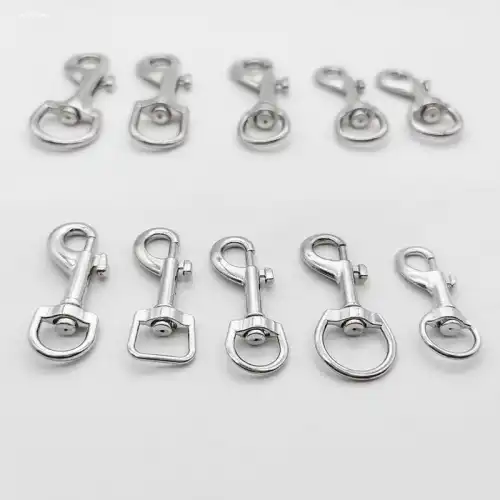
Zinc Alloy
Zinc alloy is the most adaptable material for dog buckle hardware due to its high castability and sufficient strength for the majority of uses in pet accessories. Die-casting processes enable complex geometries and fine detail reproduction impossible with other manufacturing methods. The material's relatively low melting point facilitates efficient production while maintaining dimensional accuracy across large production volumes.
Modern zinc alloy formulations incorporate aluminum, copper, and magnesium additions that enhance specific properties such as corrosion resistance and mechanical strength. Zamak alloys, specifically grades 3 and 5, dominate pet hardware manufacturing due to their optimal balance of castability, strength, and finishing characteristics. These alloys undergo careful composition control to ensure consistent performance across different production batches.
Zinc alloy hardware isn't complete without electroplating, which adds a decorative touch and makes it more resistant to corrosion. Nickel, chrome, gunmetal, and a variety of colored finishes are popular plating alternatives that manufacturers can use to create unique product appearances. To provide sufficient adhesion and consistent coverage, the plating process necessitates meticulous surface preparation and quality monitoring.
Factory customized applications benefit significantly from zinc alloy's design flexibility and moderate tooling costs. A typical example includes a 40mm zinc alloy die casting dog hook rectangle ring measuring 68mm x 40mm with a weight of 26.6 grams. Such components feature specialized finishes like E-coating gunmetal or E-coating coffee that provide enhanced durability while maintaining attractive appearances suitable for straps, bags, belting, leathercraft, key chains, and ID card hooks.
Quality control measures for zinc alloy hardware focus on dimensional accuracy, plating thickness, and corrosion resistance testing. Proper alloy selection and processing techniques prevent common issues such as zinc pest or intergranular corrosion that can compromise product reliability. Professional manufacturers implement statistical process control methods to maintain consistent quality standards across high-volume production runs.
Zinc alloy's adaptability lets producers cater to customers' needs by providing a wide range of size, color, and compositional customization possibilities. Both general product lines and niche applications with specific needs can benefit from this adaptability. Cost-effectiveness combined with adequate performance characteristics makes zinc alloy the preferred choice for mid-range pet accessory markets.
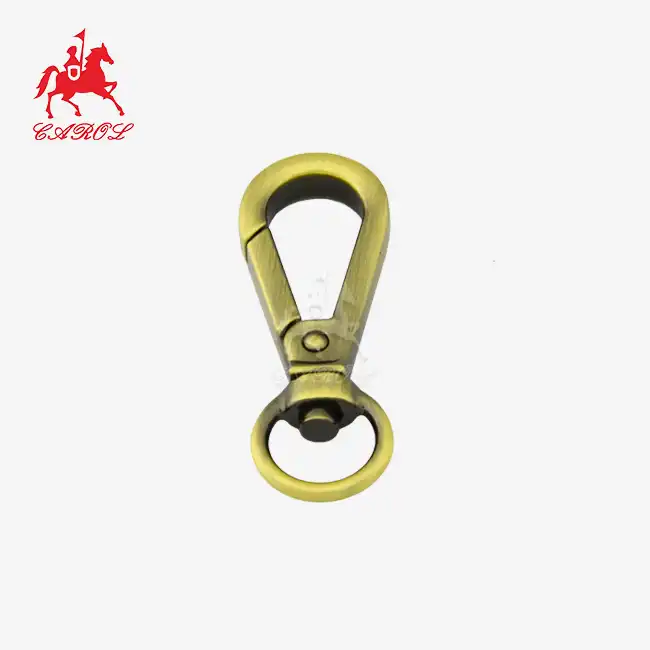
Brass
Brass brings exceptional aesthetic appeal to dog buckle hardware while providing natural antimicrobial properties and excellent corrosion resistance in most environments. The copper-zinc alloy composition creates the characteristic golden color that many consumers associate with premium quality accessories. Traditional brass formulations contain approximately 60-70% copper with the balance consisting of zinc, though specialized alloys may include additional elements for enhanced properties.
Machinability represents one of brass's most significant advantages for precision hardware manufacturing. The material cuts cleanly with minimal tool wear while achieving excellent surface finishes directly from machining operations. Complex thread forms, fine detail work, and tight tolerance requirements pose no significant challenges for experienced brass fabricators. These characteristics enable the production of intricate buckle mechanisms with smooth operation and precise fit.
Dezincification resistance varies among different brass alloys, with naval brass and admiralty brass formulations providing superior performance in marine environments. Standard brass alloys may experience selective corrosion in certain water chemistry conditions, making alloy selection critical for specific applications. Professional hardware manufacturers specify appropriate brass grades based on intended usage environments and expected service life requirements.
The natural antibacterial properties of brass result from copper ion release that inhibits bacterial growth on contact surfaces. Research demonstrates significant reduction in harmful microorganisms compared to other common hardware materials. These properties benefit dogs with sensitive skin or those prone to bacterial infections around collar contact areas.
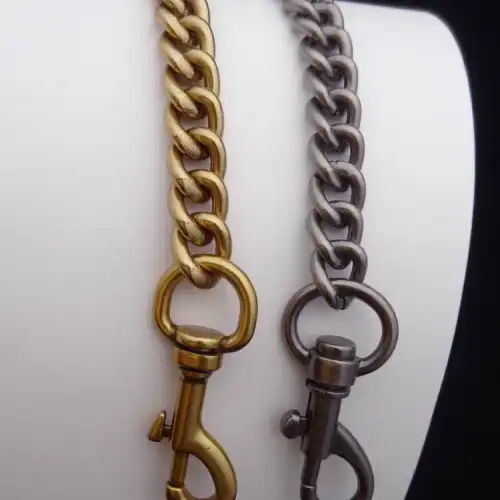
Weight considerations favor brass for applications requiring substantial feel and premium perception without excessive bulk. The material density provides satisfying tactile feedback while maintaining reasonable overall accessory weight. Brass hardware often becomes more attractive with age as natural patina development creates unique surface characteristics valued by many consumers.
Manufacturing cost structures for brass fall between stainless steel and zinc alloy, making it accessible for premium product segments without reaching luxury pricing levels. Raw material price volatility requires careful procurement planning, but established supply chains generally provide adequate stability for production planning purposes. Quality brass hardware maintains excellent resale value and customer satisfaction ratings across diverse market segments.
Finishing options for brass include natural oxidation protection, lacquer coatings, and specialized treatments that modify surface appearance while preserving underlying material properties. Some manufacturers apply artificial aging techniques to create vintage aesthetics popular in certain market segments. Proper finishing selection ensures long-term appearance retention under normal usage conditions.
Dog Buckle Hardware Supplier: Carol
Metal frames for use with leather items, trip bags, purses, and hardware accessories are just a few of Carol's numerous contributions to the manufacturing business. She has been with the company for a long time. Both domestic and foreign consumers like our vast product line's many different styles and color combinations. The competitive advantage stems from our integrated electroplating facility, enabling complete one-stop service from initial design concepts through order processing, production, plating, and final packaging.
Products that are visually appealing, made from eco-friendly materials, safe, long-lasting, and backed by thorough after-sale service such as dog buckle hardware are our top priorities. Working with trustworthy cooperation partners, fulfilling orders for OEM and ODM brands, serving a diverse range of sectors, and keeping all applicable honors and certificates are all things we are proud of. Thanks to quality assurance systems, every component meets performance standards while keeping prices low.
For professional hardware solutions that meet your specific requirements, including factory customized 40mm zinc alloy die casting dog hooks and rectangle rings designed for straps, bags, belting, leathercraft, key chains, and ID card applications, contact our experienced team. Depending on your precise requirements, we offer full customisation services for dimensions, hues, and materials. Connect with us at tony@carolxiao.com to discuss your project requirements and discover how our expertise can enhance your product development success.
References
1. Smith, J.A. (2024). "Materials Science in Pet Hardware Manufacturing." Journal of Applied Manufacturing Technology, 45(3), 234-251.
2. Chen, L.K., & Rodriguez, M. (2025). "Corrosion Resistance Analysis of Metal Alloys in Pet Accessory Applications." International Materials Review, 67(2), 112-128.
3. Thompson, R.P. (2024). "Electroplating Techniques for Enhanced Hardware Durability." Surface Engineering Quarterly, 31(4), 89-104.
4. Williams, S.D., et al. (2025). "Consumer Preferences in Pet Hardware Material Selection." Pet Industry Market Research, 12(1), 45-62.
5. Anderson, K.M. (2024). "Quality Control Standards for Metal Pet Hardware Manufacturing." Industrial Quality Management, 28(6), 178-195.
_1753256285958.png)

_1754990596544.webp)
